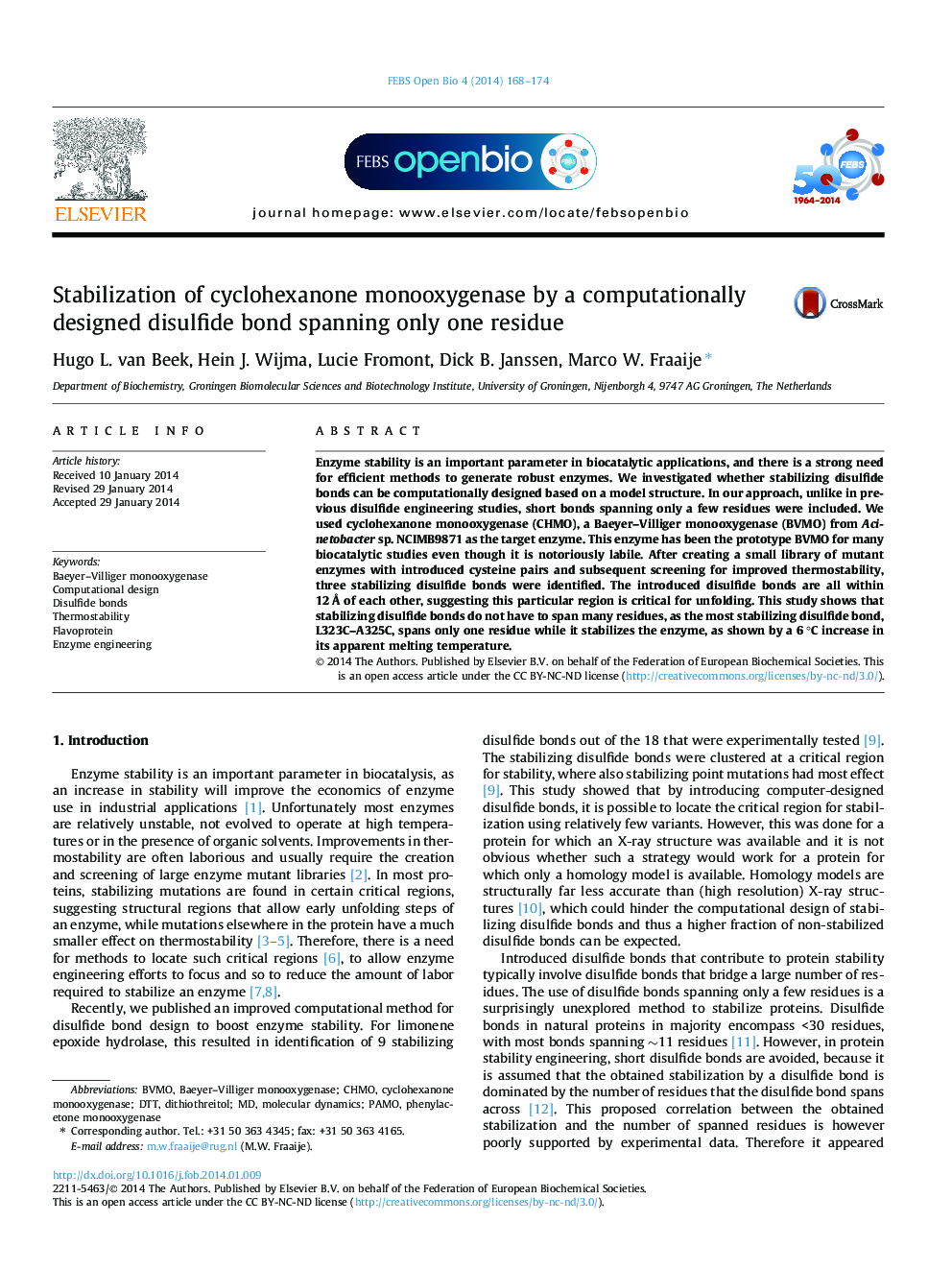| Article ID | Journal | Published Year | Pages | File Type |
|---|---|---|---|---|
| 1981672 | FEBS Open Bio | 2014 | 7 Pages |
•Cyclohexanone monooxygenase was stabilized by an in silico designed disulfide bond.•Stabilizing disulfide bonds were successfully designed based on a model structure.•The half-life at 30 °C was increased 12-fold for the mutant enzyme.•The apparent melting point was increased by 6 °C for the mutant enzyme.•The most stabilizing disulfide bond spans only one residue.
Enzyme stability is an important parameter in biocatalytic applications, and there is a strong need for efficient methods to generate robust enzymes. We investigated whether stabilizing disulfide bonds can be computationally designed based on a model structure. In our approach, unlike in previous disulfide engineering studies, short bonds spanning only a few residues were included. We used cyclohexanone monooxygenase (CHMO), a Baeyer–Villiger monooxygenase (BVMO) from Acinetobacter sp. NCIMB9871 as the target enzyme. This enzyme has been the prototype BVMO for many biocatalytic studies even though it is notoriously labile. After creating a small library of mutant enzymes with introduced cysteine pairs and subsequent screening for improved thermostability, three stabilizing disulfide bonds were identified. The introduced disulfide bonds are all within 12 Å of each other, suggesting this particular region is critical for unfolding. This study shows that stabilizing disulfide bonds do not have to span many residues, as the most stabilizing disulfide bond, L323C–A325C, spans only one residue while it stabilizes the enzyme, as shown by a 6 °C increase in its apparent melting temperature.
